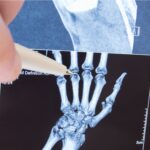International Women with Alopecia Month is observed in July every year. It aims to raise awareness about women living with alopecia, one of the most common types of hair loss. It is caused by an autoimmune disruption wherein the body attacks its own hair follicles. There are several types of alopecia, but the most common ones are alopecia areata and androgenetic alopecia. International Women with Alopecia Month was started by Bald Girls Do Lunch (B.G.D.L.), an organization dedicated to raising awareness about alopecia. B.G.D.L. offers women with alopecia a community of supportive women.
History of International Women with Alopecia Month
Alopecia, caused by an autoimmune disruption, is the most common type of hair loss. The most common types of alopecia are alopecia areata (spot baldness) and androgenetic alopecia (female pattern hair loss), and the condition has no cure. Possible risk factors include psychological stress and illness, and the cause of alopecia seems to be a breach in the immune privilege of hair follicles. This means that the body fails to recognize its own cells and subsequently destroys hair follicles.
The term ‘alopecia’ was first used in Ancient Greece, from the word ‘alopex,’ which meant fox. The first-ever mention of alopecia area was in the 1664 book “Medicina Practica,” written by the Polish John Jonston. ‘Alopecia areata’ was first used by French physician Sauvages de Lacroix in his 1763 book “Nosologia Methodica.” The first-ever clinical description of alopecia areata comes from “A Practical Synopsis Of Cutaneous Disease” in 1817. Thomas Bateman, the author, described the condition as “bald patches, mainly circular with hair regrowth that is softer and lighter in color than before.” He named it ‘porrigo decalvans,’ meaning “depilating scalp disease.”
It took many years for humans to understand the cause of alopecia areata. Among the existing theories, 19th-century beliefs attributed the condition to a parasite while questions about it being ‘neurotropic’ abounded. Recent studies have pinpointed an autoimmune error.
International Women with Alopecia Month timeline
John Jonston mentions alopecia area in his book.
The term ‘alopecia areata’ is first used.
Alopecia is given a clinical definition.
Studies find the genes that may lead to the development of alopecia.
International Women with Alopecia Month FAQs
Does alopecia worsen with age?
Alopecia can affect people of all ages, but most cases appear before the age of 40.
What is the ribbon color for alopecia?
Blue is the ribbon color for alopecia.
What type of alopecia is temporary?
Telogen effluvium is a type of temporary hair loss.
How to Observe International Women with Alopecia Month
Learn about alopecia
Help out the cause by reading up on alopecia. You gain from educating yourself and from being more aware of how others are affected by alopecia.
Talk about your story
If you live with alopecia, share your story this month. It may help others who are also living with alopecia — or maybe even people living with other similar diseases.
Talk about it on social media
Even if you don’t live with alopecia, help spread awareness by talking about it on social media. It can be of great help to the cause and help others.
5 Fascinating Facts About Hair
Keratin
Hair is mostly made up of keratin.
A fast-growing tissue
Hair is the second fastest-growing tissue in our body.
Dead cells
All visible hair contains dead cells.
Black
Black is the most common hair color.
Red
Red is the rarest natural hair color.
Why International Women with Alopecia Month is Important
It draws attention to the health condition
Alopecia is not widely talked about. International Women with Alopecia Month brings attention to the community.
It helps regulate misinformation
By making resources available to people, International Women with Alopecia Month helps reduce the taboo related to alopecia. Being well-informed is a benefit for everyone.
It is an opportunity to learn more
People with alopecia are often cast aside in society. International Women with Alopecia Month invites people to learn more about others and be more inclusive.
International Women with Alopecia Month dates
| Year | Date | Day |
|---|---|---|
| 2025 | July 1 | Tuesday |
| 2026 | July 1 | Wednesday |
| 2027 | July 1 | Thursday |
| 2028 | July 1 | Saturday |
| 2029 | July 1 | Sunday |





















































































